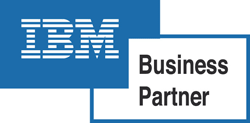February 2011

A friend, Neal Dorman, recently described a seminar he attended for information security professionals like himself. What caught Neal's attention was the twist that speaker Michael Menefee gave to a familiar topic – trust – and how it related to security. Information security professionals are certainly concerned about risk, but Michael also reminded the audience that:
- "Risk" cannot be scientifically quantified.
- While the same lack of quantification is also true of "trust," you can directly quantify "reasons to trust" for a given person, interaction, or system component.
- Trusting too much is insecure, but trusting too little is inefficient.
While this seminar approached trust, risk, and efficiency from an information technology viewpoint, I believe the lessons on trust apply to other situations, too. Patrick Lencioni's famous business fable, The Five Dysfunctions of a Team, is predicated on a lack of trust. Indeed, the base layer in the book's teamwork model is "Absence of Trust." Trust is described in the context of building a team – "trust is the confidence among team members that their peers' intentions are good, and that there is no reason to be protective or careful around the group." Fair enough, and I agree with everything written – but this description of trust seemed flat to me, and at first I could not understand why.
I pinpointed the flatness when reading the book Trust and Betrayal in the Workplace: Building Effective Relationships in Your Organization, by Dennis S. Reina and Michelle L. Reina. The authors describe their trust model, which they term "Transactional Trust," yet somewhat oddly, they never directly define "trust." And then it hit me – "trust" is "transactional" by nature.
Trust as an Action
We use "trust" as a noun, but it can only be experienced as a verb. Trust is a series of behaviors building effective relationships – hence the authors' subtitle – and behaviors are action-oriented. "Trust" is active, behavioral, and relational. When we use "trust" as a noun, we snapshot an active relationship at a particular point in time. Sometimes the relationship will be good – high trust. Other times, the relationship will be weak because behaviors – major or minor, intentional or unintentional – have broken trust.
Relationship, trust, risk, and security go hand-in-hand. As the Reinas state, "Business is conducted through relationships and trust is the foundation of relationships." Unless you trust an individual or an organization, you will never have a relationship. And once you establish a relationship, there is always the risk of things going wrong. Security provides a way to mitigate some risks, but not all. And the riskier the relationship is perceived to be, the higher are the demands for security.
Trust as a Transaction
That is one of the reasons we don't purchase items over the Internet using unsecured channels, where financial or personal information could be easily intercepted at multiple points along the way. When security techniques are put in place, efficiency is reduced but trust in the safety of those Internet purchases is increased.
This is a solid example of trust being transactional. Think back to your first online purchase – it was probably made with a slight queasiness in your stomach. Yet the transaction was safely completed, as was the next, and then many others. Today, this trust is second nature.
So it goes with teams and organizations. As noted in Trust and Betrayal in the Workplace:
Trust is the foundation of an organization's culture; without it we struggle to maintain effective relationships, align on a common vision, and achieve goals and objectives. ... Trust is both the adhesive that holds organizational relationships together and the oil that lubricates its performance. (page 144)
Just as clean oil maintains the efficiency of an engine, high trust maintains the efficiency of an organization. When high trust exists – when there is a consistent history of agreements kept, truth being told, mistakes freely admitted, and peoples' skills acknowledged and developed – time is not wasted on pointing fingers, spinning the truth, and gossiping. And that is why trust – more specifically, behaviors incrementally building transactional trust – is not just the right thing to do, it's also the efficient thing to do.
![]()
Todd L. Herman
Client Project Update:
I am pleased to provide you with an update on our client projects. Projects we have completed over this period are...
Enhanced Financial Reporting
Completed design and development of custom financial reports using SQL Server Reporting Services, replacing the weak ledger-based reports with reports having user-controllable detail and presentation options, helping the financial staff better deliver useful information to managers.
Managing ERP System Implementation
Began managing the implementation of this client's ERP system implementation and assisted in identifying and addressing data quality and data conversion issues, working to ensure a smooth project kickoff and establishing expectations for client and vendor personnel, thus setting the stage to ensure tasks are done accurately and completely.
Improving Medical Technician Productivity
Designed and developed a new combination of process and technology to allow collection and processing of patient payments, and certified the application with the client's preferred payment processor, enabling medical technicians to better focus on serving the patient, while also improving company cash flow.
Web-Based Patient Payment Processing
Designed and developed a web-based patient payment web application, allowing patients to easily and securely pay bills electronically while also integrating this transaction with our client's main business system.
System Revisions for Offshore Production Changes
Worked with client line-of-business and systems personnel to specify key system modifications to support a changed offshore manufacturing configuration for this apparel company, defining the program changes and test cases needed to handle the required modifications.
Develop Data Warehouse & Design Reporting Options
Oversaw all data loading and testing, identified and resolved data consistency and similar issues, revised the detailed data schemas to parallel business process changes surfaced by this project, completed development of the necessary Extract-Transform-Load (ETL) routines, and designed and prototyped various visualization and reporting options for this data warehouse and summary dashboard, working closely with executives and managers to develop analytical capabilities while also identifying business process changes needed to better support the analyses desired.
Future projects we are planning include...
Leveraging Special Pricing to Multiple Situations
Develop a method for identifying vendor-approved special prices for a particular commercial construction project on inventoriable items, and sharing these special prices to leverage discounts across the company and other projects, allowing our client to use these vendor-approved special prices in other situations.
Identify Causes of Unclassified Variances
Review the processes and systems used to capture and classify production and sourcing variances in this apparel company, identifying root causes of large unclassified variances and recommending changes to better capture, classify, and calculate these, helping executives and managers make better planning, sourcing, and supply chain decisions.
Rollout Lotus Traveler for iOS and Android Devices
Develop the pilot plan, configure the new server, test iOS and Android device connections, and incorporate appropriate SSL certificates for secure transmissions, helping this company achieve a smooth rollout of Lotus Notes/Domino Mail to tablet and smartphone devices.
Analyzing Managed Care Recoveries
Analyze available data and design options to evaluate net amounts recovered from various health insurance providers, helping this medical services company better assess service profitability and improve price negotiations.
Thematic Mapping
Work with this property management company to automatically produce dynamic thematic maps of key operational and occupancy data for its properties, allowing visual analysis of property activity and other business metrics, freeing its CAD department to focus on designing new properties, and allowing non-technical users easy and interactive access to maps in nonproprietary formats.
Using IBM Lotus Notes/Domino to Its Full Potential
Work with this leading services company to help executives and managers better understand and use IBM Lotus Notes/Domino, helping them leverage their technology investment to improve call tracking, service representative scheduling, and knowledge sharing among their corporate office and 14 branch offices.





